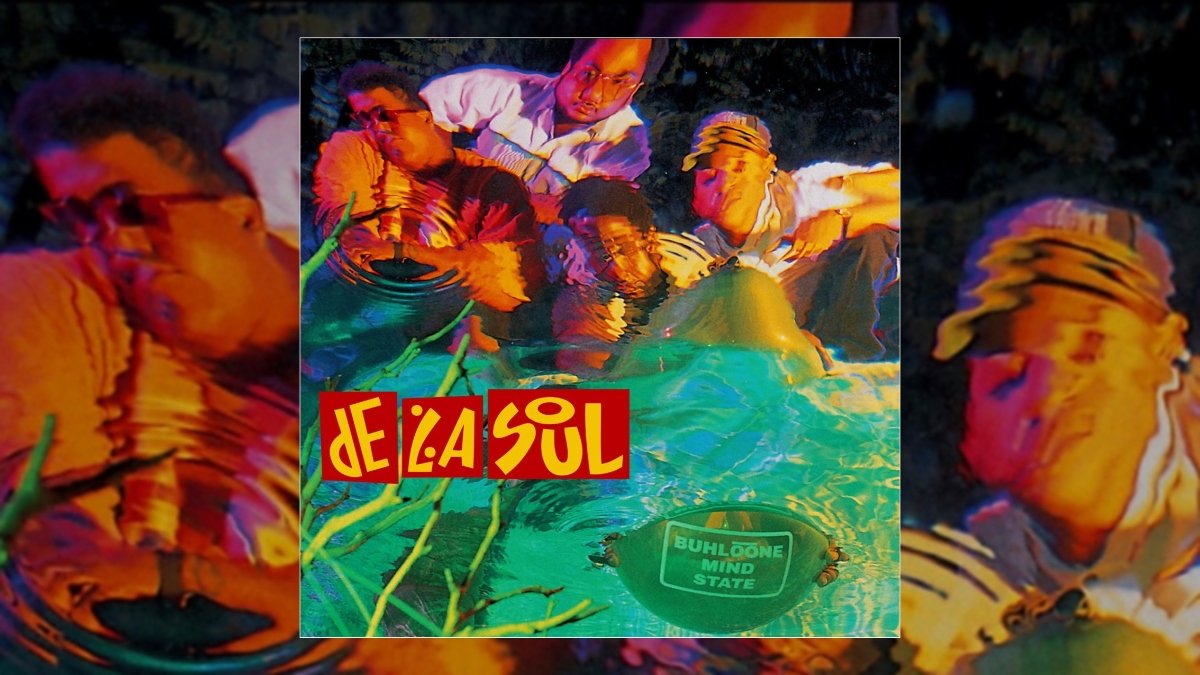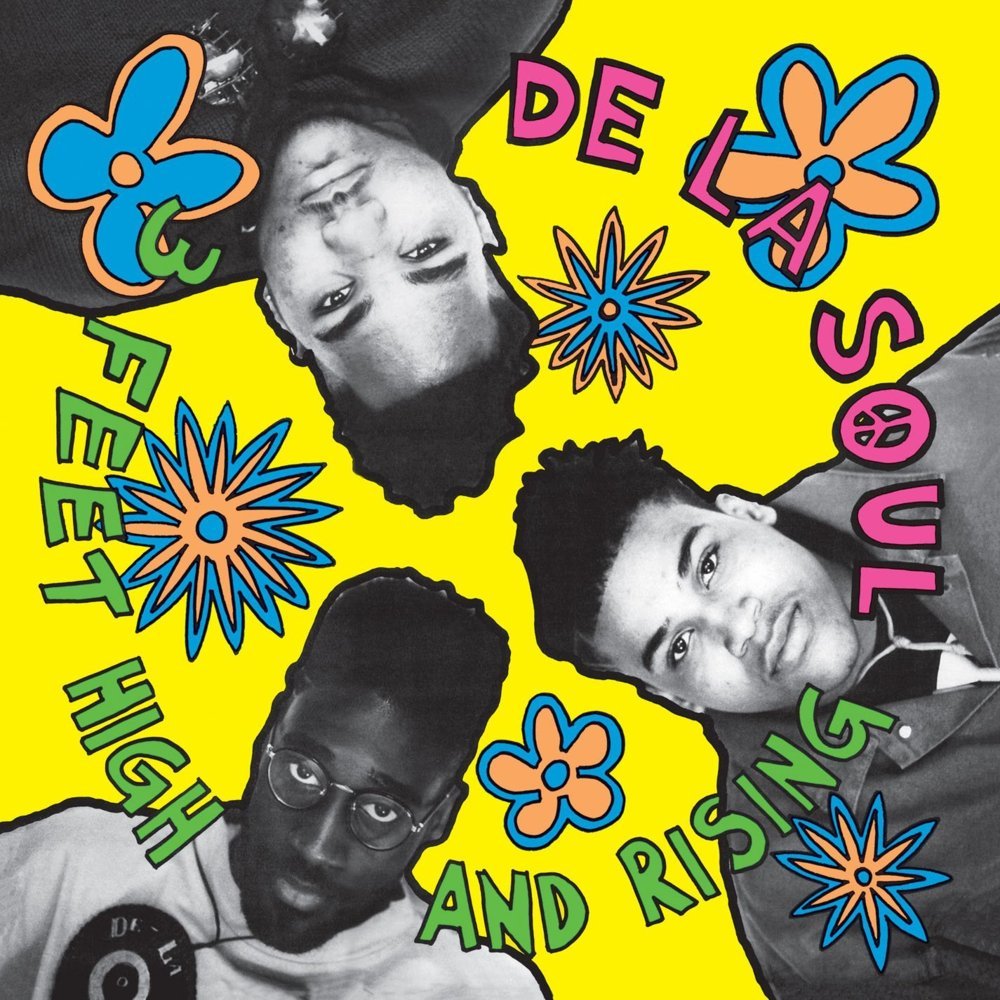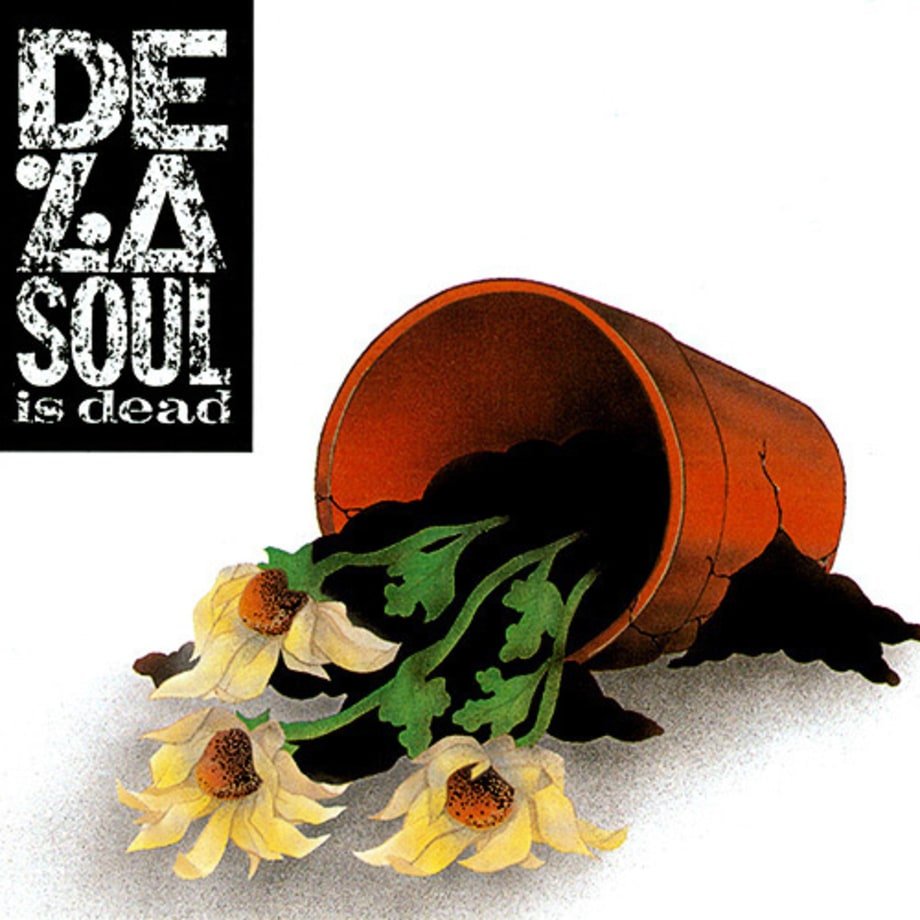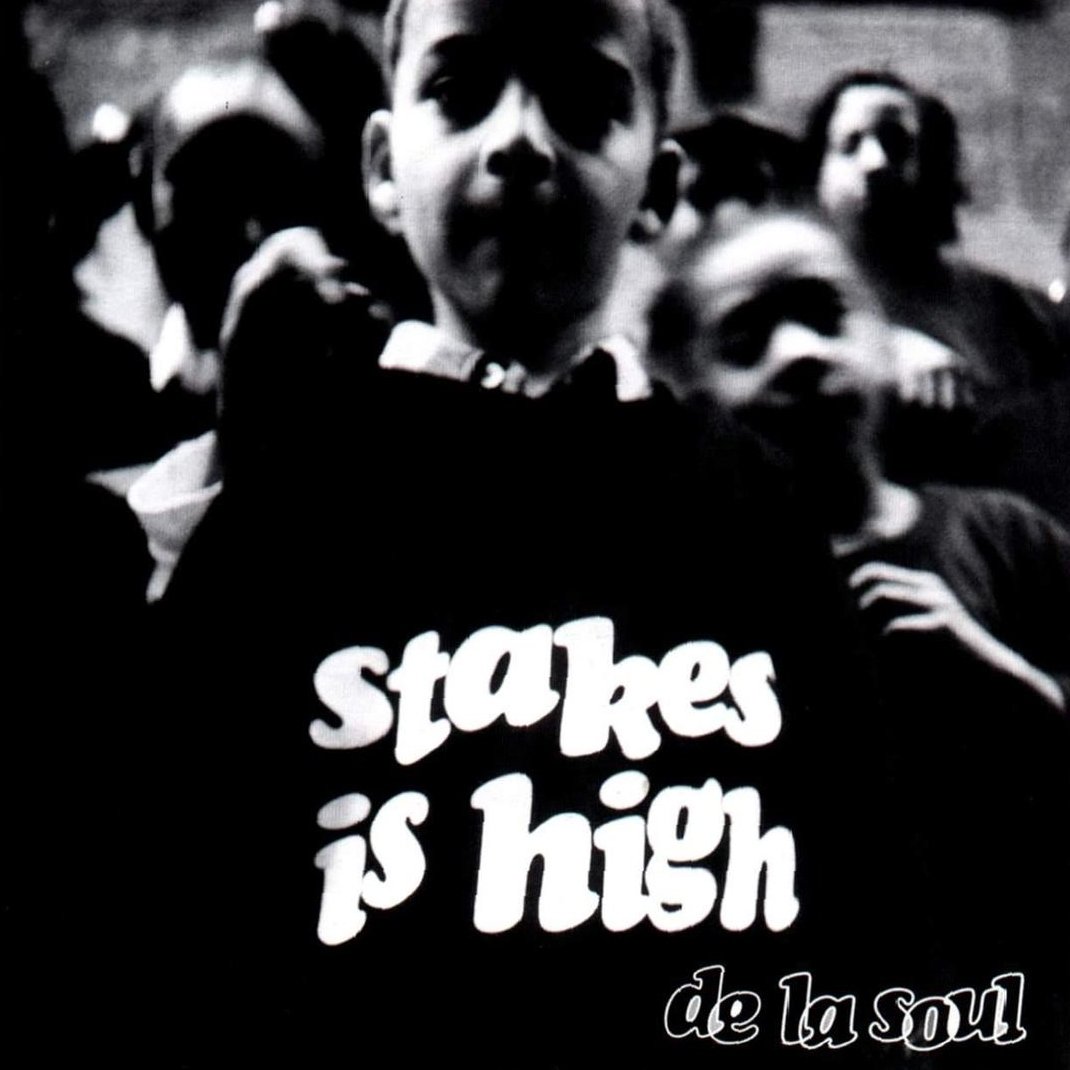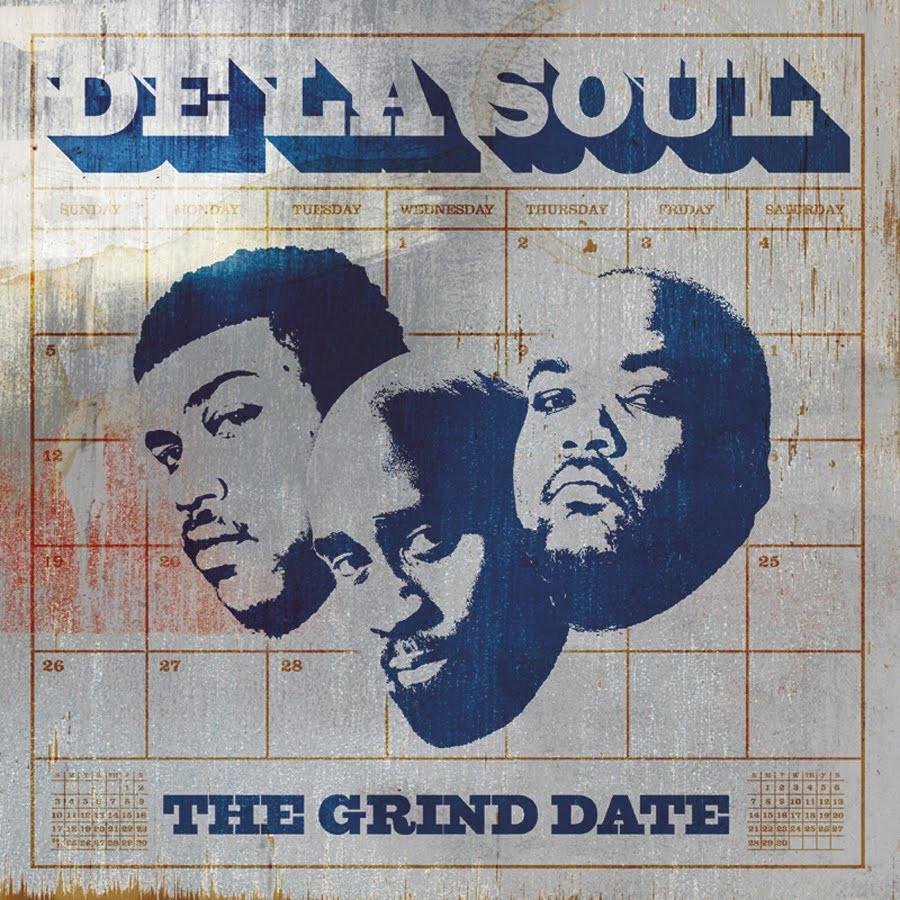Happy 30th Anniversary to De La Soul’s third studio album Buhloone Mindstate, originally released September 21, 1993.
The old saying goes that success is a journey, not a destination. And in that sense, few artists have committed the undertaking of this journey like De La Soul, one of the greatest hip-hop groups of all time, if not the greatest. Bursting onto the scene as fresh-faced and naïve kids living in Long Island, New York, they found success and acceptance in the hip-hop world largely by being their quirky selves. But even being true to yourself on record can be draining, and by Buhloone Mindstate, their third album, released 30 years ago, the successful journey was grinding De La Soul down.
Made up of David “Trugoy the Dove” Jolicoeur (R.I.P.), Kelvin “Posdnuos” Mercer, and Vincent “Maseo” Mason, the trio had been artistic iconoclasts since they dropped their debut LP 3 Feet High and Rising (1989). The problem was, even though their music was deep, layered, and reasonably successful, their record label and much of the record-buying public adopted a surface-level view of their art and perceived them only as hip-hop eccentrics. Tommy Boy Records, which signed the group in the late ’80s, hoped the group would pander to the lowest common denominator and put out happy yet ultimately shallow music. The tension between the group and the label was present on De La Soul Is Dead (1991), their sophomore release. By the time Buhloone Mindstate hit the shelves, things were close to exploding.
For all the talk of how De La coded their speak in abstract sensibilities, the group has always worn its heart on its sleeve. Pos and Dove have never been shy about expressing their feelings, you just may need to decipher their rhymes to fully appreciate them. And after 3 Feet High and Rising, De La Soul had a lot of animosity towards the major label machine.
Buhloone isn’t a particularly happy album, and judging from the lyrics, the group didn’t sound like they were in a “good” place when they recorded it. De La were increasingly bitter about their situation with Tommy Boy, troubled by the more “gangsta”-fied direction that hip-hop was moving towards, and increasingly distraught that the Native Tongues collective was possibly collapsing.
As most know, the Native Tongues were originally comprised of De La Soul, A Tribe Called Quest, and the Jungle Brothers. But as the years went on, the collective grew to include a whole host of other artists that changed depending on who you ask. Meanwhile, things were growing acrimonious between some of the original members of the group, rending some friendships apart at the time.
De La sounds disillusioned with the music industry throughout Buhloone Mindstate. They sound tired of the politics, the mind-games, and the incessant pressure to seek crossover appeal. Buhloone Mindstate is full of digs at mainstream pandering, notably beginning the album with the chant of “We might blow up, but we won’t go pop!”
The group took a more active role in the production side of the equation for this project. Though Prince Paul’s presence and influence is definitely felt throughout the album, there’s a more serious edge to the material, which is in keeping with its themes.
Buhloone Mindstate is also a much shorter album than De La had released before. Both 3 Feet High and De La Soul is Dead are both sprawling masterpieces containing dozens of tracks and dotted with skits. There was a sense that the group was overflowing with ideas and were trying as much as they could. Comparatively, Buhloone is a lean and mean affair, clocking in at a little over 48 minutes and sporting a stronger sense of purpose.
There are also fewer skits, and with fewer skits comes less humor. However, you do get Prince Paul and Dove leaving funny messages on Pos’ answering machine and the occasional curveball that was the group’s hallmark. A brief appearance by Japanese emcees Scha Dara Parr comes out of left field towards Buhloone’s halfway mark, but it is still in keeping with De La’s spirit.
All that said, just because an album isn’t “happy,” doesn’t mean it isn’t great, and Buhloone Mindstate truthfully ranks in the top three of De La Soul’s albums and is still underappreciated by far too many.
The album opens with “Eye Patch,” a brief salvo against the tricks and games played by record music executives trying to cover the group’s proverbial third eye. Over an itchy, bluesy guitar groove, De La detail how they’ve learned to circumvent record labels’ tactics to get them to dumb down their music. Dove raps, “Show the sheep, ’cause I found the food / When I string the man with the eye patch.”
The group goes more in-depth with their growing contempt of the music industry with “Patti Dooke,” their extended screed against label politics and Tommy Boy’s relentless push to make their music more accessible. In between samples of dialogue from The Five Heartbeats, Pos and Dove, backed by Gang Starr’s Guru, express disgust at their labels continued cluelessness at how to market their music, not to mention the continued appropriation and dumbing down of hip-hop by the wider population.
Watch the Official Videos:
Production-wise, “Patti Dooke” is the project’s most interesting song due to its extensive live instrumentation. The song prominently features the talents of Maceo Parker, Fred Wesley, and Pee-Wee Ellis, known for their contributions as the horn section for James Brown’s band. Here the three riff across the groove, backed by Frank Hess on the flute, making the song a JBs-like throwback.
Record labels aren’t the sole focus of the group’s ire. “En Focus” explores the fickleness of the hip-hop audience. Pos turns in a great performance, reflecting on how he’s gone from zero to hero back to zero again, as the group’s “pop” fortunes how shifted. The song features ad-libs from Dres of Black Sheep, then not too far removed from the success of their debut album A Wolf in Sheep’s Clothing (1991), as well as Shorty No Mas, a young up-and-comer who would lend her vocals to many tracks across Buhloone.
De La do find some humor in their general malaise towards the music industry, evidenced on “Ego Trippin’ (Part Two),” the album’s second single. The song partially draws from De La’s reverence for the Ultramagnetic MCs (who released the ahead-of-its-time “Ego Trippin’” back in 1986), but mostly lampoons overly braggadocious hip-hop. Pos and Dove string together a prolonged stream of non-sequiturs, often lifting lines from other rappers’ songs, to establish their own prowess. The group’s intentional word salad sounds fly over a sample from the East Asian-influenced “Harlem Hendo” by Al Hirt.
For all the goofiness of “Ego Trippin’ (Part Two),” an air of sadness permeates much of Buhloone Mindstate. “Breakadawn,” the album’s first single, Pos and Dove’s meditation on the group members’ origins and upbringing. Going from WIC checks and rat-infested buildings in the Bronx to pursuing their dreams of becoming successful emcees is indeed a triumph. However, the crew tempers their happiness acknowledging all that they sacrificed to make it to that point.
By the time Buhloone was released, De La had already established their rep as one of the most introspective hip-hop groups making music. So it’s not a surprise that “I Am I Be” is one of the most confessional hip-hop tracks ever recorded, and one of the best entries in De La’s expansive catalogue. Pos and Dove use the song to come to terms with how they’ve grown and changed throughout the years, contemplating how time has transformed them and their relationships.
Pos laments what he believes was the dissolution of the Native Tongues crew, reflecting on how things fell apart, as he raps, “I guess we got our own life to live / Or is it because we want our own kingdom to rule? / Every now and then I step to the now / For now I see back then I might have acted like a fool.” As the years have passed, Pos has occasionally disavowed this portion of the song, maintaining that the crew wasn’t breaking up and what he expressed reflected his feelings during the actual recording session. That said, it all makes for evocative poetry.
Enjoying this article? Click/tap on the album covers to explore more about De La Soul:
Meanwhile, Dove waxes philosophical about the need to stay positive in an increasingly negative environment, dodging obstacles that present themselves. “I choose to run from the rays of the burning sun,” he raps. “And dodge a needle washing up upon a sandy shore / I bring the element H with the 2 / So ya owe [O] me what’s coming when I’m raining on your new parade.”
Though the song is built around a slow and moody piano loop of Lou Rawls’ “You Make Me So Very Happy,” another appearance by Parker, Wesley, and Ellis adds to the track’s melancholy. The album also features a tweak on a full-length instrumental of the song, as “I Be Blowin’,” features Parker playing an extended sax solo, creating a mellow jazz track. On the What Had Happened Was podcast, Prince Paul revealed “I Be Blowin’” was recorded first, and originally intended as background music that he could chill to in his studio. De La heard the track and insisted that they use it for the project.
Buhloone Mindstate isn’t a total exercise in acrimony. “3 Days Later,” a “smoothed out without the R&B” track, finds Pos and Dove each describing dangerous situations where they don’t use discretion and end up paying for it. Meanwhile, “Area” is De La’s celebration of their travels across the country and globe, whether for exploration or touring purposes.
“In the Woods” is a re-establishment of the group’s purpose in the midst of a changing hip-hop landscape. The aforementioned Shorty No Mas shines on her first full verse, explaining how she has “much soul on the down-low tip,” and Maseo makes an appearance behind the turntables to give the listeners a “taste of what they thought was lost.” But it’s Pos who’s the star of the track, rapping “Punch that ‘0’ for operator, baby, it’s a love solid / I been styling abstract since loose leafs was the shit / Catch me breathing on planes where the gangsta’s outdated / Fuck being hard, Posdnuos is complicated.”
De La end Buhloone with “Stone Age” a salute to hip-hop’s old-school era and another of the album’s lighter songs. In a team-up with the Diabolical Biz Markie, Pos and Dove rap over a bouncy bassline and chopped bits from the breakdown of Grandmaster Flash and the Furious Five’s live version of “Flash To the Beat.” They extol bringing hip-hop “back to the beat-box” and to an era before sample clearances and other major label shenanigans were the law of the land.
For all of the album’s leanness, there is quite of a bit of “unreleased” material associated with Buhloone. Copies of the “Breakadawn” and “Ego Trippin’ (Part Two)” singles featured “Lovely How I Let My Mind Float,” another off-kilter Biz Markie collaboration. There was also the “Ego Trippin’ (Part Three)” remix, which I prefer to the original. De La also released the Clear Lake Audiotorium EP, which featured a few songs from the album, as well as “SH.FE.MCs” featuring A Tribe Called Quest and “Stix & Stonz,” featuring verses from old school legends like Grandmaster Caz, Prince Whipper Whip, and The Fearless Four, with musical backing from The Brand New Heavies. These were all high quality recordings, but it made sense to leave them off Buhloone, as they wouldn’t have quite fit in the album’s overall scheme.
Three decades later, Buhloone Mindstate is regarded as the De La project that tried-and-true fans of the group consider its best. It certainly holds up as well as all of their legacy material, and its recent addition to streaming services has been very welcome. Its quality still endures, even as the sentiments that drove its creation have faded. Genuine emotion and sentiment expressed in music have no statute of limitations, and few groups channeled their emotions like De La did with Buhloone Mindstate.
LISTEN:
Editor's note: this anniversary tribute was originally published in 2018 and has since been edited for accuracy and timeliness.

